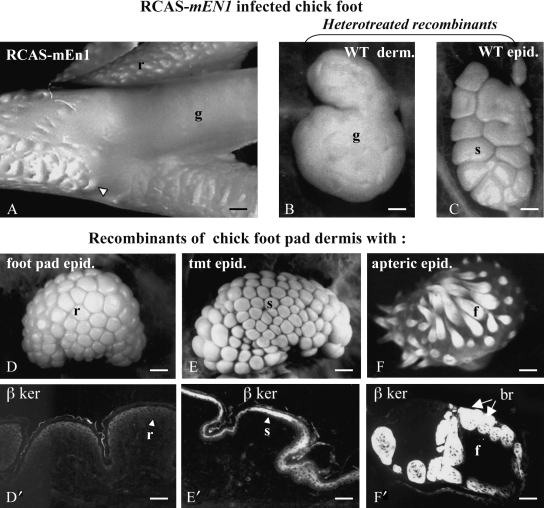Fig. 4.
Engrailed-1 and the inhibition of cutaneous appendage morphogenesis in the chick foot. Skin differentiation at 18 days on dorsal side of the foot of a RCAS mEn-1-infected chick embryo. The overlapping scuta (compare with the control, Fig. 3A) are replaced by glabrous skin together with convoluted (arrowhead) or rounded reticula. (B,C) Heterotreated recombinants morphogenesis shows that the RCAS-En-1 infection affects only the epidermis and does not change the dorsal tarsometatarsus properties of the dermis. (D–F′) The usual expression of En-1 in the epidermis of the plantar region prevents the formation of beta-keratinized (β-ker) cutaneous appendages (D,D′), while the association of a plantar dermis with a tarsometatarsal epidermis leads to the formation of small scuta (E,E′) and that with a neutral epidermis from the midventral apterium leads to feather morphogenesis (F,F′). Note that the pattern in all cases depends on plantar dermis. After Prin & Dhouailly 2004. Reproduced with permission of Int J Dev Biol. br, barb ridges; derm, dermis; epid, epidermis; f, feather; g, glabrous; r, reticula; s, scuta. Bars: A: 400 µm, B–F′: 150 µm.

